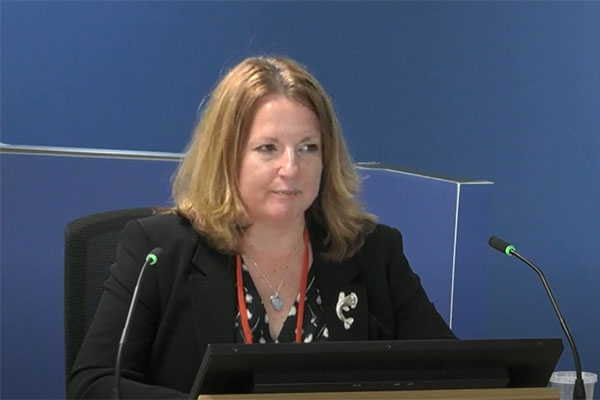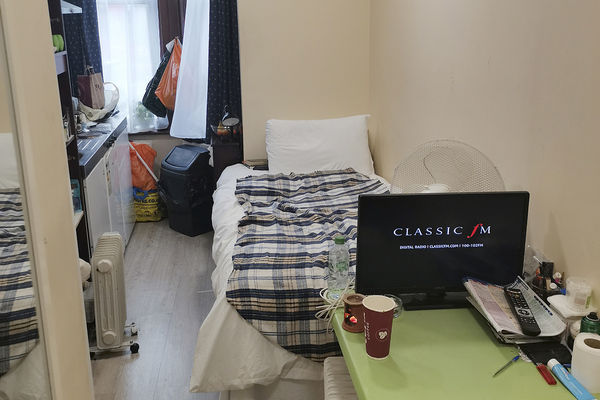You are viewing 1 of your 1 free articles
RBKC housing head failed to check if fire service concerns over Grenfell had been fixed before fire
The head of housing for the council that owned Grenfell Tower failed to check whether issues raised by the London Fire Brigade (LFB) with regards to self-closing doors had been rectified at the time of the fire, the inquiry heard today.
Laura Johnson, head of housing at the Royal Borough of Kensington and Chelsea (RBKC) at the time of the fire, confirmed that she had failed to verify with Kensington and Chelsea Tenant Management Organisation (KCTMO) whether it had rectified fire safety issues raised in a deficiency notice served on Grenfell Tower by the LFB in November 2016.
The brigade had served a deficiency notice regarding fire issues at the block, which referenced broken self-closers on doors. It said the issues should be fixed by 18 May 2017, a month before the fire.
However, the inquiry has subsequently found out that on the night of the fire, there were various issues with the fire doors in the tower, including several fire doors not self-closing, meaning smoke escaped from individual flats into the communal areas.
One of the entrance doors specifically referenced in the deficiency notice was still not working at the time of the fire.
Richard Millett QC, lead counsel to the inquiry, asked if Ms Johnson was ever provided with confirmation that the issues had been rectified.
Ms Johnson said: “I would have in normal course of events but I don’t remember in this instance and I haven’t seen any doc to my knowledge about a response by TMO to LFB on this particular deficiency notice.”
She said she had assumed that the matters raised in the deficiency notice would have been fixed because the “TMO always responded to deficiency notices”.
She added that the TMO regularly met with the LFB and assumed it would have been corrected and confirmed in one of those meetings.
However, she confirmed that she had never verified this with Janice Wray, KCTMO’s health, safety and facilities manager.
“It’s unaccountable to me that I didn’t go back to Janice at that point because I took deficiency notices extremely seriously, but clearly I didn’t in this instance,” she said.
This was the second day of evidence given by Ms Johnson, who left the organisation in September 2017, with questioning focusing largely on the performance of the TMO in the years before the refurbishment of Grenfell took place.
The evidence revealed that the LFB had threatened to serve an enforcement notice against KCTMO in 2009. Among the issues the brigade raised with the TMO’s approach to fire was with its lack of competency to carry out adequate fire risk assessments.
In one meeting with KCTMO in 2009, the LFB’s Collette O’Hara said that the key problem with the TMO’s assessments was the low level of knowledge about whether doors were up to the correct standard.
This assessment was followed up by an independent review of KCTMO’s fire safety policy and procedures, carried out by Salvus, which identified 25 areas where hazards existed as a result of the TMO management systems in place and concluded that the organisation had no overall fire strategy in place.
It also revealed that none of KCTMO’s checks or fire risk assessments included checks on doors, storage facilities or security of the block.
The LFB decided against implementing an enforcement action after KCTMO agreed an improvement plan that would see it employ an independent consultant to carry out FRAs on all 110 of its high-risk blocks and complete this in six months.
The inquiry continues with further evidence from Ms Johnson tomorrow.
Sign up for our weekly Grenfell Inquiry newsletter
Each week we send out a newsletter rounding up the key news from the Grenfell Inquiry, along with the headlines from the week
Already have an account? Click here to manage your newsletters










